
Sentinel Mesa is a 6,450-foot-elevation (1,966-meter) summit in San Juan County, Utah, United States. It is situated 1.5 miles (2.4 km) north of the Monument Valley visitor center on Navajo Nation land and can be seen from Highway 163. The mesa is immediately northwest of the iconic West and East Mitten Buttes. The nearest higher neighbor is Brighams Tomb, 2.64 miles (4.25 km) to the north-northeast. Precipitation runoff from this mesa's west slope drains to Mitchell Butte Wash, whereas the east slope drains to West Gypsum Creek, which are both part of the San Juan River drainage basin. The "Sentinel" name refers to how the mesa oversees Monument Valley which the Navajo consider as one of the "door posts" to Monument Valley. The landform's toponym has been officially adopted by the U.S. Board on Geographic Names.

Eagle Mesa is a 6,624-foot-elevation (2,019-meter) summit in San Juan County, Utah, United States.
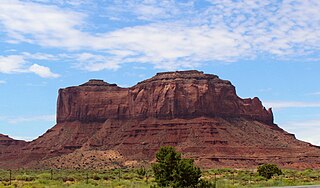
Brighams Tomb is a 6,739-foot-elevation (2,054-meter) summit in San Juan County, Utah, United States.
Mitchell Mesa is a 6,586-foot-elevation (2,007-meter) summit in Navajo County, Arizona, United States.
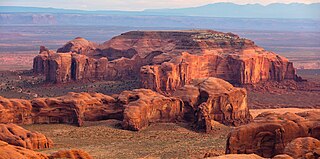
Spearhead Mesa is a 5,998-foot-elevation (1,828-meter) summit in Navajo County, Arizona, United States.

Rain God Mesa is a 5,921-foot-elevation (1,805-meter) summit in Navajo County, Arizona, United States.

Camel Butte is a 5,847-foot-elevation (1,782-meter) summit in Navajo County, Arizona, United States.
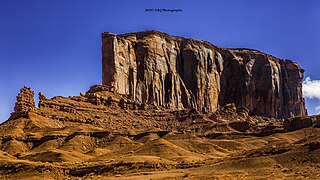
Elephant Butte is a 5,981-foot-elevation (1,823-meter) summit in Navajo County, Arizona, United States.

Cly Butte is a 5,820-foot-elevation (1,774-meter) summit in Navajo County, Arizona, United States.

Mitchell Butte is a 6,383-foot-elevation (1,946-meter) summit in Navajo County, Arizona, United States.

Gray Whiskers is a 6,385-foot-elevation (1,946-meter) summit in Navajo County, Arizona, United States.
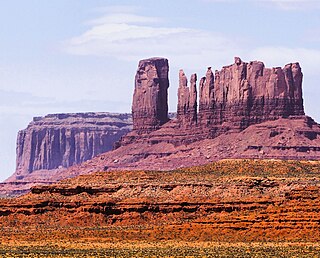
Castle Rock is a 6,340-foot-elevation (1,932-meter) summit in San Juan County, Utah, United States.
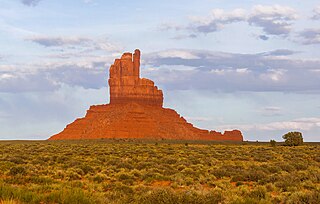
Big Indian is a 6,120-foot-elevation (1,865-meter) summit in San Juan County, Utah, United States.

Rooster Rock is a 5,985-foot-elevation (1,824-meter) summit in Apache County, Arizona, United States.

Thunderbird Mesa is a 5,814-foot-elevation (1,772-meter) summit in Navajo County, Arizona, United States.
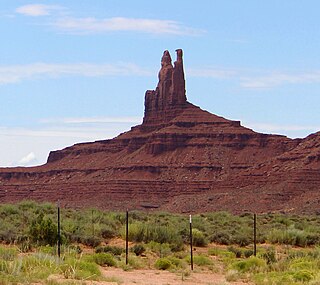
King-on-his-Throne is a 6,165-foot-elevation (1,879-meter) summit in San Juan County, Utah, United States.
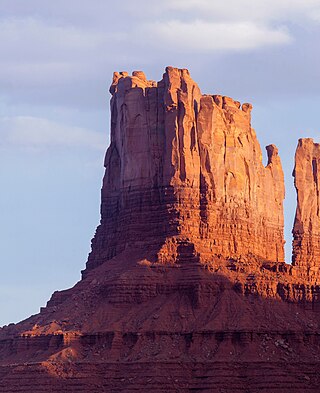
Stagecoach is a 6,302-foot-elevation (1,921-meter) summit in San Juan County, Utah, United States.

Rooster Butte is a 5,145-foot-elevation (1,568-meter) summit in San Juan County, Utah, United States.

Setting Hen Butte is a 5,055-foot-elevation (1,541-meter) summit in San Juan County, Utah, United States.

Franklin Butte is a 5,179-foot-elevation (1,579-meter) summit in San Juan County, Utah, United States.




























